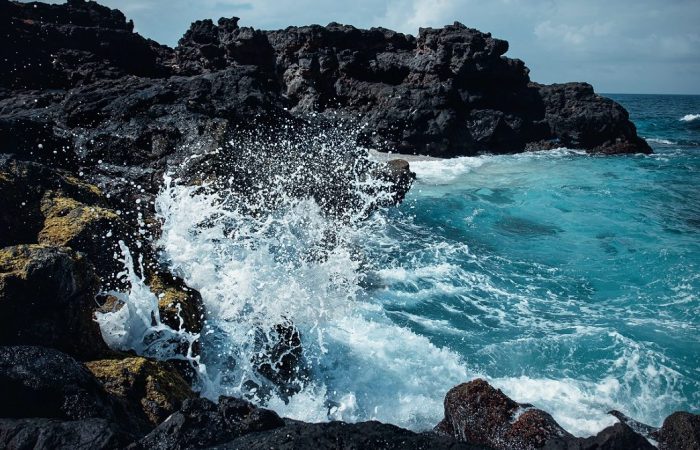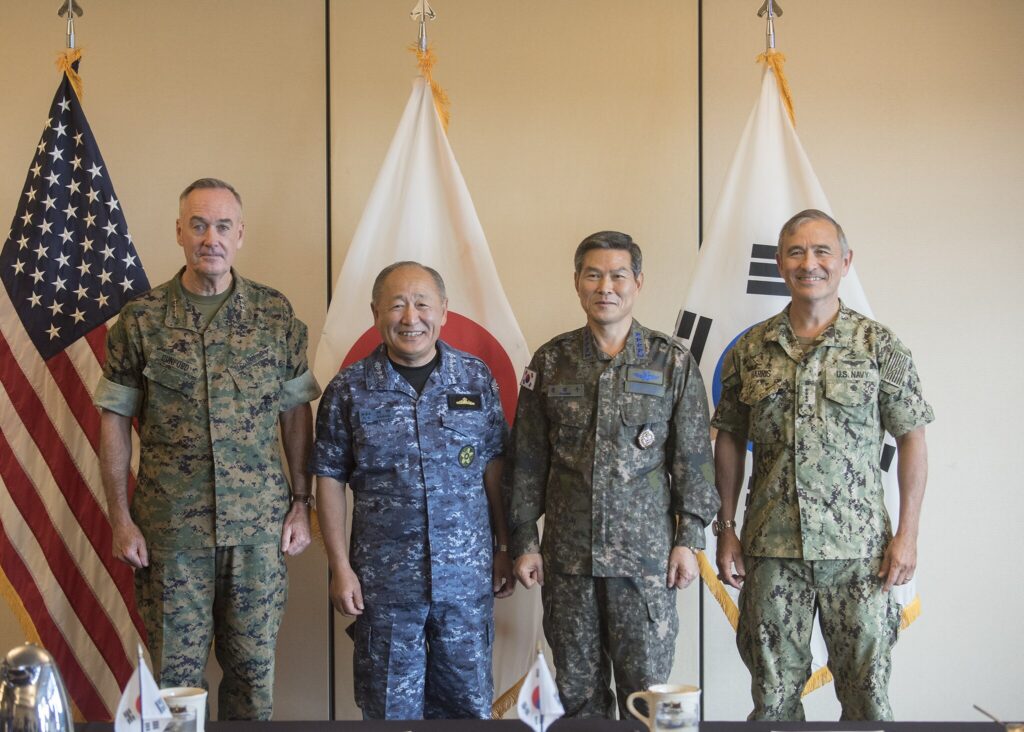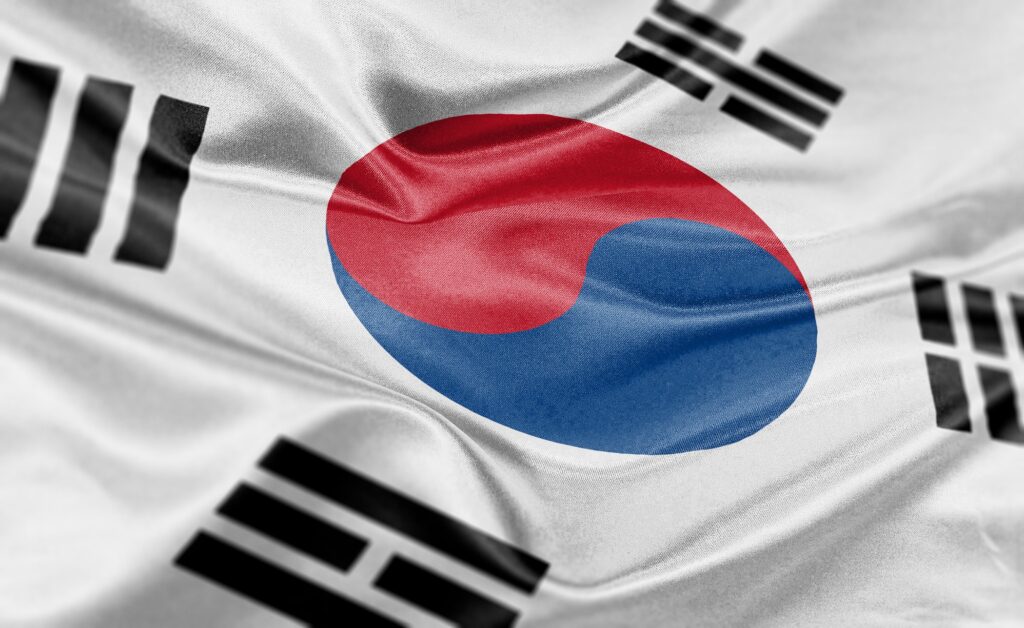Security tensions in the South China Sea are rising again due to escalating major power rivalry between the United States and China. The US and China have increased their military presence in the South China Sea by sending their warships to conduct air-sea battle exercises while the whole world continues to struggle against the scourge of the COVID-19 pandemic.
Two American aircraft carriers, USS Nimitz and the USS Ronald Reagan, started its military drills in the South China Sea on 4 July 2020 during the commemoration of American Independence Day. The US government regards those exercises as part of its commitment of “standing up for the right of all nations to fly, sail and operate wherever international law allows”.
China, on the other hand, just concluded on 5 July 2020 its military exercises near the Paracel Islands “to counter the US” and to push back against the Pentagon for having “ulterior motives” in sending two aircraft carriers in the South China Sea.
These military exercises of competing major powers have heated up tensions in the South China Sea as both up the ante of its military activities in the contested maritime domain that is considered to be one of the major flashpoints of armed conflicts in Asia where the two major powers can collide. In fact, those military exercises were so proximate, making US Rear Admiral James Kirk on the Nimitz to comment “they have seen us and we have seen them”.
Prior to these military exercises, the Philippine government, through Secretary Teodoro Locsin of the Department of Foreign Affairs, issued a strong statement on 3 July 2020 expressing concerns over China’s drills. Locsin stressed that the Philippines would “severely” respond if China would encroach on Philippine territories. Locsin exclaimed, “Should the exercises spill over to Philippine territory, then China is forewarned that it will be met with the severest response, diplomatic and whatever else is appropriate.”
China concluded its military drills without untoward incident.
But the growing major power rivalry between China and the US in the South China Sea has raised a big question if the Philippines is pushing back against China and is shifting back to the US as its only military ally considering that Manila has earlier suspended the termination of the Visiting Forces Agreement (VFA). How will this new situation affect the Philippines’ “comprehensive strategic cooperation” with China? Is President Rodrigo Duterte flip-flopping again in its foreign policy amidst US-China rivalry in the South China Sea?
Some are quick to conclude that Duterte is flip-flopping in the guise of pursuing an independent foreign policy.
But what is not fully understood is the fact the Philippine government has been applying the grand strategies of small states in dealing with great powers within an anarchic international system.
Small states and great powers have different survival instincts amidst international anarchy. Realist theory of international relations contends that great powers seek their survival by balancing each other. But small states, by virtue of their inherent vulnerability in the anarchic international system, find their survival by forging relationships with great powers balancing each other. Because of their inherent vulnerable situation, small states pursue relationships with great powers depending on the situation. Small states respond to situations according to their own national interests and not the interests of major powers in competition.
The Philippine government is pushing back against China in the South China Sea because of the current situation that threatens Manila’s security interests. China’s recent military activities in the South China Sea, particularly around the waters of the Kalayaan Island Group (KIG) in the Spratlys, are causing security anxieties in the Philippines. There is a tendency for the Philippine government to cling with the US to address common security interests as the US continues to be the only security ally of the Philippines that can effectively balance China.
When the situation is calm in the South China Sea and Manila’s security interests are not compromised, the Philippines has a tendency to shift its gear towards China being a close giant neighbor for centuries. The Philippine government continues to have an interest to pursue a comprehensive strategic cooperation with China for economic purposes.
The Philippine government has economic needs that China can provide. But the Philippine government also has security needs that the US can provide. If China can allay Manila’s current fear of the situation in the KIG and can provide Manila’s current security needs in the South China Sea, the Philippines will find no reason to reach out to its only security ally, the US, as this alliance always reminds the Philippines of its colonial experiences. But the Philippines government is compelled to pivot back to the US because the current situation dictates so.
In 1991, the Philippine government terminated the US-Philippines Military Bases Agreement because of the post-cold war situation. When China established full control of the Mischief Reef in 1995, the Philippines invited the US back by signing the VFA that came into force in 1999. The VFA became very useful in the aftermath of September 11, 2001 (9/11) terrorist attacks as both countries cooperated in the global war on terrorism.
Meanwhile, the South China Sea enjoyed a calm moment in 2002 when China and members of the Association of Southeast Asian Nations (ASEAN) signed the Declaration on the Conduct of Parties in the South China Sea. But when the Philippine government withdrew its troops from Iraq in 2004, the US became lukewarm to the Philippines encouraging Manila to pursue “comprehensive engagement” with China. In 2005, the Philippines and China enjoyed the “golden years” of their bilateral ties with the dismay of the US.
In 2009, the situation went wrong in the South China Sea. China became more assertive legally and militarily that renewed security tensions in the area. Legally, China submitted to the United Nations on 7 May 2009 a map of its nine-dash line claim in the South China Sea. Militarily, China fortified its military structures in its occupied areas in the Spratlys and Paracels. This situation encouraged the Philippines to deal with the US again.
When China occupied the Scarborough Shoal in 2012, the Philippines filed an arbitration case against China in 2013. The arbitration case led to the deterioration of Philippines-China relations reaching its lowest moment in its recent bilateral history. The arbitration case, however, motivated China to pursue land reclamation activities, which led to the building of artificial islands in seven geographic features in the Spratlys. Under this situation, the Philippines signed the Enhance Defense Cooperation Agreement (EDCA) with the US in 2014.
The situation changed in 2016. The International Arbitral Tribunal made its landmark decisions in favor of the Philippines. The Philippines under Duterte who had personal animosity against the US, decided to pursue a paradigm shift to China.
The Philippines and China have started to enjoy a new era of closer friendship under Duterte who described his relationship with China like the blooming of a big and beautiful flower. Duterte’s policy of paradigm shift to China ushered in the new age of cooperation between the two countries. Duterte even threatened to separate with the US.
When President XI Jinping visited the Philippines in 2018, the two countries declared their comprehensive strategic cooperation to have an all around relationship, which is a rapid turn-around in their bilateral ties. They celebrated another golden age of their bilateral ties during this visit. The Philippines and China signed the Memorandum of Understanding (MOU) to facilitate their joint cooperation on the development of oil and gas resources in the South China Sea, particularly in areas being claimed by the Philippines called West Philippine Sea (WPS).
Situations were going very well in the Philippines-China relations. Under President Xi JinPing and President Duterte, the Philippines and China enjoyed the highest moment of their bilateral relations. Both countries even established the Bilateral Consultative Mechanism in the South China Sea to promote peace, friendship and cooperation.
But the COVID-19 pandemic altered the security situation in the South China Sea as a result of China’s continuing assertion of sovereignty. The Philippines and its neighbors have also expressed their security anxieties on the current situation. Again, the Philippines government needs to pivot to the US.
In other words, situation in the South China Sea greatly affects Philippine foreign policy towards China and the United States. When the security situation is tense, the Philippine government embraces the US. When the security situation is calm, the Philippine government engages China.
The Philippine government is just applying the grand strategy of small states when dealing with major powers.




